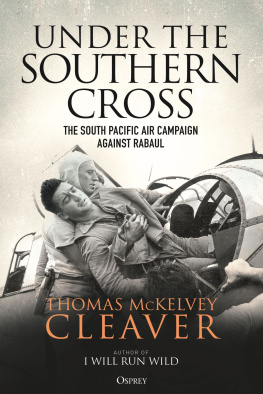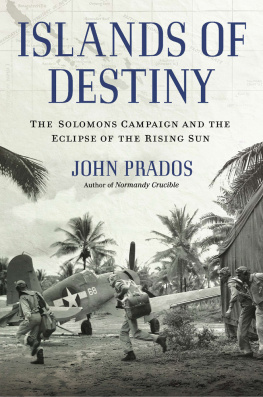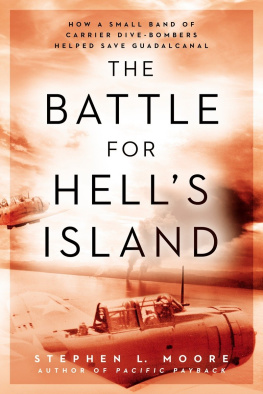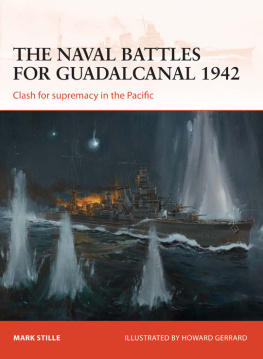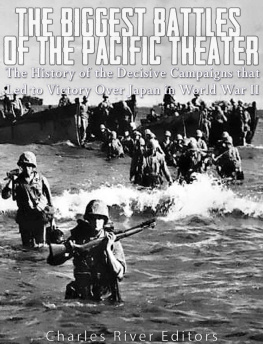Acronyms, Abbreviations, and Code Names
COMMAND ACRONYMS
AAF | Army Air Forces (Arnold) |
BSIPDF | British Solomon Islands Protectorate Defence Force |
COMAIRSOLS | Commander Aircraft Solomons (Mulcahy; Mason) |
COMINCH | Commander in Chief, United States Navy (King) |
COMSOPAC | Commander South Pacific Area (Halsey) |
COMAIRSOPAC | Commander Aircraft South Pacific (Fitch) |
CINCPAC | Commander in Chief, Pacific (Nimitz) |
IMAC | First Marine Amphibious Corps |
IGHQ | [Japanese] Imperial General Headquarters |
SOPACSOUTH | South Pacific Area |
MILITARY ACRONYMS AND ABBREVIATIONS
APA | Attack Transport |
AKA | Attack (Cargo) Transport |
APC | Small Coastal Transport |
APD | High-speed Transport |
CB | Naval Mobile Construction Battalion (commonly called Seabees as a play on the initials CBs) |
FA | Field Artillery |
LCI | Landing Craft Infantry |
LCT | Landing Craft Tank |
LST | Landing Ship Tank |
MAW | Marine Aircraft Wing |
NGAF | New Georgia Air Force |
NGOF | New Georgia Occupation Force |
RCT | Regimental Combat Team |
RNZN | Royal New Zealand Navy |
SCAT | South Pacific Combat Air Transport |
SNLF | Special Naval Landing Force (Japan) |
SWPA | South West Pacific Area Command (MacArthur) |
TF | Task Force |
TG | Task Group |
VB | Navy Bomber Squadron |
VF | Navy Fighter Squadron |
VMF | Marine Fighting Squadron |
VMSB | Marine Scout Bomber Squadron |
VMTB | Marine Scout Torpedo Squadron |
CODE WORDS
CACTUS Guadalcanal; later code name changed to MAINYARD
CARTWHEEL Operational name for overall strategy to retake New Guinea and the Solomon Islands (United States)
CLEANSLATE Operational name for occupation of Russell Islands
TOENAILS Designation for the New Georgia operation (United States)
ULTRA Deciphered information from encrypted enemy communications (United States)
I-g aerial offensive launched against Guadalcanal (Japan)
Ka-g Operation to withdraw from Guadalcanal (Japan)
Ke-g Operation to reinforce the Solomons (Japan)
Se-g Operation to evacuate Kolombangara (Japan)
To-g Operation to establish new defense line on New Guinea (Japan)
Acknowledgments
A GREAT MANY PEOPLE HELPED ME OVER THE YEARS THAT I worked on this New Georgia campaign project, and without doubt I will inadvertently leave out others that have helped me for which I apologize.
First and foremost, I am in lasting debt to Naoko Suesada. Without her generous and reliable translation of Japanese records and diaries, a balanced two-sided historical account of the New Georgia campaign would not have been possible. Hitomi Deneen did additional Japanese translations for which I am grateful.
In North America, I express my appreciation to the following institutions and persons for their contributions: U.S. National Archives and Still Picture Reference section at Suitland, Maryland; U.S. Library of Congress; Charles Haberlein at the Naval Historical Center, Washington Navy Yard; U.S. Army Center of Military History; Archie DiFante at the Air Force Historical Research Agency at Maxwell Air Force Base; U.S. Navy Seabee Museum at Port Hueneme, California; Helen Morriss Wildasin for her husband Mack Morrisss diary; Associate Professor Daryl Carter at ETSU; Ed Speer, my former student and researcher; Matt Poole of Wheaton, Maryland; Tom McLeod of Texarkana; the late Colonels Jefferson J. DeBlanc and Berton H. Tex Burns.
During my trip to Japan, I received assistance from the Military Archival Library, National Institute for Defense Studies in Ebisu, Tokyo; Nobuhiro Moriya; and my daughter-in-laws parents, Kenichi and Katsuko Tsunoda.
In the South Pacific area, I extend my thanks to my long-term Australian friend and Solomons research collaborator, Peter Woodbury of Sydney. Also from Australia, I am indebted to the late coastwatcher Martin Clemens; Peter Flahavin of Melbourne, for his local knowledge and record sharing on Guadalcanal; Dr. Peter Stanley of the Australian War Memorial; and the Australian National Archives in Canberra. In New Zealand, Ewan Stevenson of Auckland shared valuable information on the Western Solomons, and David Duxbury of Christchurch was a reliable source on the RNZAF and its aircraft. In the Solomon Islands itself, my thanks to the Solomons Islands National Museum at Honiara, Agnes Lodge, and Alfred A. Bisili of Munda and Danny Kennedy of Gizo.
Lastly, I want to thank my family who have supported me throughout this labor of love John and Rima, Anna, Joe, and Stephanie.
Ronnie Day
Johnson City, Tennessee
Japanese Air Force Organizations
IMPERIAL JAPANESE NAVY AIR FORCE ADMINISTRATIVE ORGANIZATION
Kk kantai Air Fleet (carrier- or land-based).
Kk sentai Carrier Division (or Air Flotilla for land-based units).
Kk bokan Carrier-based Air Group.
Kktai Naval land-based Air Group.
Hikotai Flight Echelon of Kk bokan or Kktai.
Hik buntai Usually the administrative equivalent of a Chutai.
IMPERIAL JAPANESE NAVY AIR FORCE OPERATIONAL ORGANIZATION
Hikokitai Carrier-based aircraft Echelon or Wing, or the Flight Echelon of a Kktai. Air group (such as attached to a ship).
Daitai Squadron of 18 to 27 aircraft (Sentai for IJAAF).
Chutai A unit of six to nine aircraft.
Shtai A unit of two to four planes (usually three).
Buntai Two-plane element, adopted late in the war as part of a four-plane Shtai.
Chutai Three to four Shtai.
Daitai Three to six Chutai.
Hikotai/Kktai Two to three Daitai.
Seiktai Air Superiority Unit.
Kgekitai A split division of a Seiktai.
IMPERIAL JAPANESE ARMY AIR SERVICE ORGANIZATION
Kk gun Air Army of two Air Divisions (Hik Shidan), plus some independent units.
Hik Shidan Air Division made up of two or more Air Combat Groups, plus base and support units. Previously designated Hik Shodan = Air Corps.
Hikdan Air division of two or more air combat groups.
Kktai Air combat group
Hik Sentai Air combat group of three squadrons.


